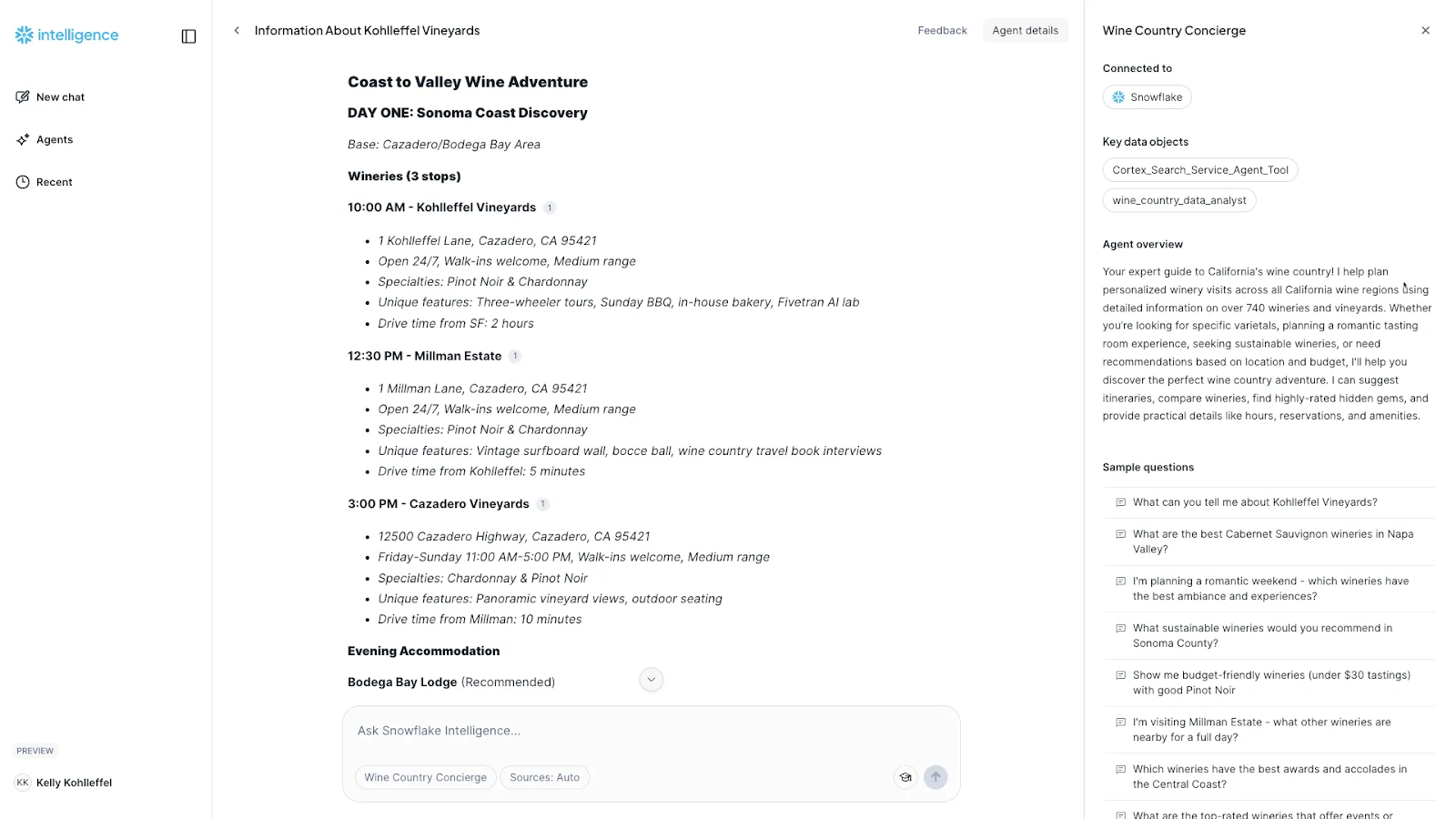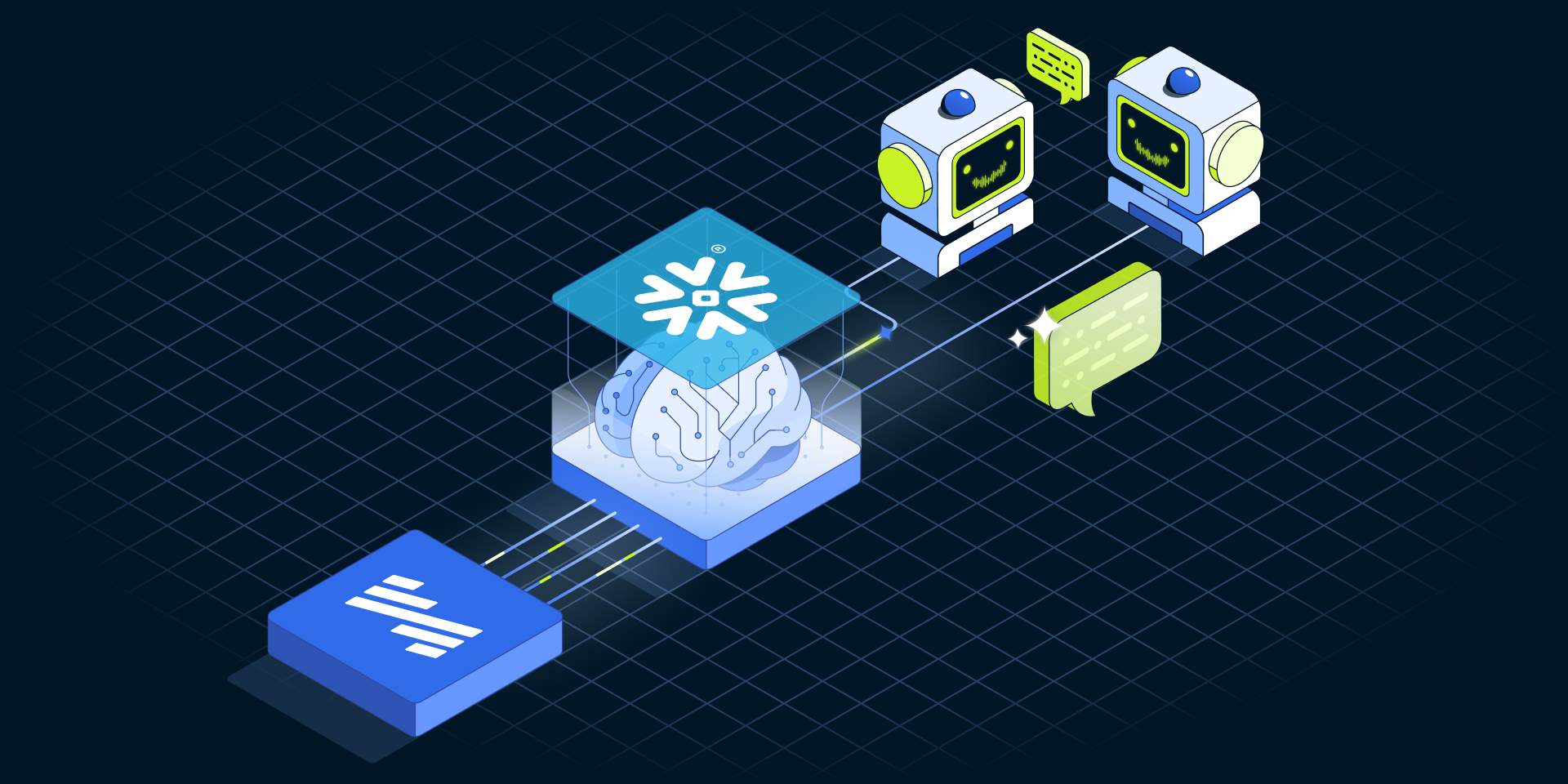Through many experiments across multiple industries, I’ve come to believe that the most practical and valuable generative AI tools share five essential traits:
1. Narrow domain focus
The future of enterprise AI isn’t one giant, all-knowing assistant—it’s an ecosystem of many small, specialized tools with complementary capabilities that work side by side. Each tool should focus on a well-defined domain, such as performance analytics, cost optimization, or field strategy. Narrow scope means faster iteration, more reliable reasoning, and less noise. Many specialized tools are better than one all-purpose tool.
2. Minimal user friction
Users shouldn’t need to learn prompt engineering or wrangle complex parameters. The best AI systems should abstract complexity away behind a simple interface, like natural language. A field technician or finance manager should be able to ask, “How did our maintenance costs trend last quarter?” and immediately get an accurate, contextualized response.
3. Reusable architecture
Every app or agent should build upon a shared foundation: the same security model, the same governance policies, and the same semantic understanding of data. Reusability through a standardized framework that is 90% refactored from app to app or agent to agent keeps complexity in check and accelerates value creation.
4. Rapid time-to-value
The best AI systems deliver results quickly, taking minutes to configure, not months to deploy. They should leverage existing data pipelines and models instead of reinventing them. Speed breeds trust: when stakeholders see quality results fast, adoption follows.
5. Unified data architecture
None of this works without a unified data layer. Tools like Fivetran and Snowflake make that possible. Fivetran automates data movement from hundreds of sources, while Snowflake centralizes and governs that data at scale. Together, they create the foundation upon which generative AI can reason, act, and evolve safely.
When the plumbing just works, builders can focus on intelligence, not integration.
What new capabilities does Snowflake Intelligence offer?
When I first started building generative AI applications, I would build RAG-based, GenAI applications in the Snowflake Data Cloud with:
- Fivetran for data integration
- Snowflake data platform for a destination
- Snowflake Cortex for AI/ML services
- Snowflake Arctic
- Streamlit for the front end and UI.
These setups worked fine, but didn’t “think” like agents. They still required quite a lot of upfront setup and weren’t much help for automating complex, multi-step tasks.
The new way: Conversational AI
Snowflake Intelligence changes that equation. It turns Snowflake into a conversational, agentic environment. Instead of stitching tools together, you define semantic models (for structured data) and search indexes (for unstructured content), then let Snowflake’s agent orchestrate queries, retrieval, and reasoning automatically.
You no longer need to write Python scripts to set up UIs and connect SQL and embeddings. You just enter “Find the top-performing records by ROI and explain why they outperformed others” into a chat window, and the agent plans, executes, and narrates the answer.
This means simpler systems, less code, and dramatically greater agility. You can build sophisticated AI experiences that understand your data and your business without touching the underlying plumbing.
How Snowflake Intelligence built me an itinerary for Wine Country
For some time, my go-to test case for generative AI was a Wine Country recommendation system I built using Streamlit and Cortex APIs. It was a fun experiment, combining winery details, ratings, and distances from Snowflake with inference from an LLM, but it required custom code, API stitching, and careful prompt tuning.
When Snowflake Intelligence entered public preview, I tried a direct comparison. I gave the agent a rambling prompt:
Provide a winery visit itinerary to visit nine wineries during a three-day trip. I’d like to visit the Sonoma Coast on day one, Yountville on day two, and St. Helena on day three. Provide driving times as well. Organize this into a three-day trip. Provide a hotel recommendation for the evening of day one and a different hotel for the evening of day two. Also, let me know about other activities that you recommend on the Sonoma Coast, in Yountville, and in St. Helena, such as hiking trails. Also, provide a catchy name for this trip of no more than seven words. Take all of the information and organize it with the trip name at the top, and all the information in a good printable format. Lastly, what else would you suggest to make this trip even better?

The results floored me. Within seconds, Snowflake Intelligence produced a complete itinerary: winery visits sequenced by geography, restaurant recommendations, alternate activities, even driving times, and a catchy trip name: all zero-shot, no prompt engineering, no code.
Behind the scenes, the agent combined Cortex Search (to discover relevant wineries and attractions) with Cortex Analyst (to compare ratings and price points). In a few minutes, I had something that would’ve taken hours to build and configure the old way. Generative AI doesn’t have to mean generative complexity.
An industrial test case: Analyzing oil and gas operations
Next, I took on something harder: modernizing a field operations analytics system for an oil and gas services company. I’d previously built a Streamlit and Cortex app consisting of four separate workflows, each powered by its own data models and context:
- Overall performance: Autonomous field operations workflow that analyzes technician logs, maintenance records, and equipment data to generate automated summaries, identify failure patterns, and produce prioritized operational insights with predictive maintenance recommendations.
- Optimization opportunities: AI-powered field operations optimization analysis that automatically detects maintenance scheduling gaps, equipment performance inefficiencies, and resource allocation improvements with specific implementation recommendations for EAM integration.
- Financial impact: Automated oil & gas financial analysis that calculates comprehensive ROI, identifies maintenance cost reduction opportunities across equipment categories, and projects operational efficiency benefits with detailed cost forecasting.
- Strategic recommendations: A strategic field operations intelligence workflow that analyzes competitive advantages against traditional manual processes, identifies IoT and predictive maintenance integration opportunities, and creates prioritized digital transformation roadmaps.
With Snowflake Intelligence, I refactored the whole setup into four specialized agents, each corresponding to the aforementioned dashboards:
- Field operations performance analyzer – examined productivity, downtime, and technician output.
- Optimization specialist – suggested maintenance schedules and cost-reduction measures.
- Financial analyst – calculated ROI, cost trends, and payback periods using a custom ROI calculator UDF.
- Strategy advisor – synthesized insights into business recommendations.
Setting up all four took about two hours—and most of that was defining semantic models and instructions, not writing code.
Each agent combined:
- A Cortex Search service for unstructured logs and reports.
- A semantic view for structured data (e.g., technician hours, repair costs).
- A clear role definition and planning sequence (“analyze → gather evidence → recommend”).
Once configured, I could ask questions in natural language like:
“Show me the top ten technicians by maintenance cost per hour.”
“Explain why downtime spiked in Region 3 last quarter.”
The agents planned their steps, retrieved evidence, and generated visuals—all conversationally, without dashboard clicking or manual queries.
The impact was immediate: my architecture was simpler, my insights were faster, and my users didn’t need to know SQL or Streamlit. They could just talk to their data.
How to set up Snowflake Intelligence agents
To build Snowflake Intelligence agents like I have described, follow these instructions.
1. Prerequisites
You will need a dataset in Snowflake, preferably one that you understand very well. I recommend using a Fivetran connector (including custom ones as needed) to integrate data into Snowflake. Make sure you have a Snowflake account with Cortex Intelligence enabled.
2. Create a Semantic View for Cortex Analyst
Through the Snowsight UI, navigate Data → Semantic Views → Create Semantic View.
Choose your base table and define dimensions and metrics, as you might in any BI platform. Test it with a simple SQL query to ensure the results are correct. Remember what you named the Semantic View; you will need it later.
3. Create a Cortex Search Service for structured data
Navigate to Data → Databases → Your Database → Cortex Search → Create Service.
Choose your table and the columns to index. Add filters to narrow the service's scope as needed. Snowflake will automatically embed the text for semantic retrieval, meaning you don’t need to provision a vector database or invoke an embedding model separately.
As with the Semantic View, remember what you named the Search Service; you will need it later.
4. Build the agent
Navigate to AI & ML → Snowflake Intelligence → Agents → Create Agent.
Name the agent and link it to your Search Service and Semantic View. Add some instructions, like:
Act as a senior field operations performance manager with deep expertise in equipment reliability analysis and maintenance effectiveness measurement. Focus on quantitative analysis of failure rates, maintenance costs, downtime patterns, and operational efficiency metrics from comprehensive field operations data. Always provide specific performance benchmarks, trend analysis with statistical context, equipment reliability comparisons, and data-driven recommendations for operational performance improvement.
Test out your agent with some questions that you already know the answers to. As outputs improve in accuracy, continue iterating and adding more data sources and agents.
Snowflake Intelligence and agentic AI have a bright future
After building both the Wine Country and oilfield agents, I came away convinced that Snowflake Intelligence represents the next major evolution in enterprise AI—one that blends governed data, agentic reasoning, and human accessibility in a single platform.
It’s easy to imagine what might come next:
- Agent-to-agent communication – Imagine a performance agent detecting an equipment issue and prompting the financial agent to calculate cost impact, while a strategy agent proposes mitigation.
- Grouping agents – Teams of agents could operate as logical units—say, an “FTS Field Ops” cluster—each bringing its specialty to a shared workspace.
- More advanced visuals and spatial intelligence – Built-in mapping, time-series overlays, and spatial visualizations are especially relevant for industries like logistics and energy.
- Fine-grained control over models – Savvy AI users benefit considerably from the ability to choose model families, adjust temperature (creativity and randomness), or fine-tune instruction sets for different reasoning styles.
- Assessment and evaluation of agents – Agentic AI is still in its infancy, with limited training sets for agentic workflows. The ability to evaluate and agents using different models is invaluable.
- Templates for common use cases – Predefined agent blueprints (finance, marketing, HR, operations) could reduce configuration time dramatically, letting organizations spin up domain agents in minutes.
- Easier duplication and reuse – Cloning an existing agent and its toolset should be as easy as copying a dashboard—critical for large enterprises scaling to dozens of teams.
- “Generate with Cortex” shortcuts – A UI option that lets builders auto-generate agent instructions from schema and sample queries could make setup almost instantaneous.
Snowflake Intelligence represents a turning point in how we think about AI in the enterprise. It moves us away from monolithic apps and brittle dashboards toward a new model: conversation-driven, agentic, and data-native. Autonomous operational intelligence offers radical new possibilities, moving AI from reactive maintenance and management to predictive, orchestrated field operations where human expertise is amplified by coordinated AI reasoning across all operational dimensions.
When combined with Fivetran’s automated pipelines, this architecture closes the loop—from data ingestion to intelligent action—with minimal friction. Data arrives clean, governed, and ready; agents interpret it, explain it, and even act on it.
Whether you’re planning a winery tour or optimizing an oilfield, the principle is the same: Build small, build smart, and let your data do the talking.
[CTA_MODULE]









